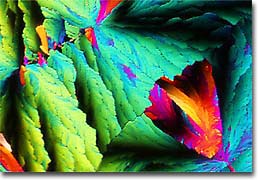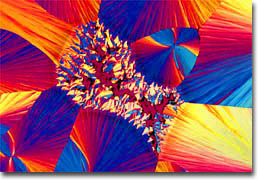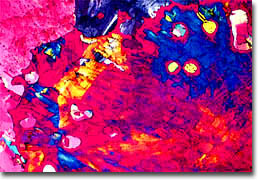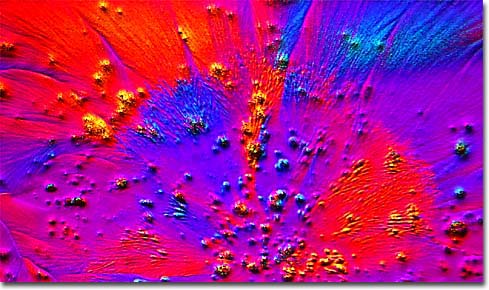|
Prostaglandins are a member of the lipid class of biochemicals and are known for their potent physiological properties. They belong to a subclass of lipids known as the eicosanoids because of their structural similarities to the C-20 polyunsaturated fatty acids, the eicosanoic acids. Prostaglandins vary somewhat, however, from one another based upon subtle differences in their chemical structures, some exhibiting, for instance, different side-chain substitutions than others. These small variations are believed to be responsible for the immense diversity of effects characteristic of prostaglandins. In general, prostaglandins act in a manner similar to that of hormones, by stimulating target cells into action. However, they differ from hormones in that they act locally, near their site of synthesis, and they are metabolized very rapidly. Also, the same prostaglandins act differently in different tissues.

Prostaglandin A3
First discovered in semen during the 1930s by Swedish scientist Ulf von Euler, prostaglandins received their name from the prostate gland, where they were first thought to originate. Early studies of prostaglandins carried out by Euler and other researchers revealed that these substances were active, capable of both lowering blood pressure and instigating the contraction of uterine tissue. Later efforts revealed much more, including the fact that that prostaglandins do not occur only in the prostate gland, but can, in fact, be found in many animal tissues since they are not restricted to specific organs. Prostaglandins, it was also discovered, are only active for a short period of time before they are modified into a non-functional form and are subsequently excreted from the body. Thus, tissues cannot effectively store prostaglandins, but must instead synthesize them in a nearby area when needed. Synthesis takes place in the membranes of various cells.

Prostaglandin A2
Although some prostaglandins can be synthesized in the laboratory, the natural production of one of the hormone-like substances involves a series of intricate steps. First, the activity of the enzyme phospholipase A facilitates the release of the precursor, arachidonic acid, from phospholipids. Then, another enzyme, lipoxygenase, induces the production of leukotrienes, which are associated with influencing the inflammation of tissues, while the enzyme cyclooxygenase acts on the arachidonic acid in such a way that the substance is converted into multiple endoperoxides. Comprised of peroxide groups that link atoms that are parts of a larger molecule, the endoperoxides then undergo even more synthesis before they are finally transformed into prostaglandins. These substances and related compounds are then transported out of the cell from whence they were produced, usually interacting with receptors in the plasma membranes of surrounding cells.

Prostaglandin B2
Approximately a dozen different prostaglandins have been identified, each of which is associated with different kinds of activities and effects on various kinds of tissues. One important activity of many of these eicosanoids is facilitating the relaxation of the muscle walls that delineate blood vessels, effectively dilating them. Similar to other means of vasodilation, this action results in decreased blood pressure. Working in conjunction with thromboxanes, prostaglandins play an equally important role in blood clotting, the balance between the two different kinds of substances essentially controlling whether or not coagulation occurs. In addition, many prostaglandins induce inflammation and the constriction of muscle tissue, while a lesser number are believed to be involved in the inhibition or promotion of activities such as ion transport, cell growth, lipolysis, temperature regulation, and immune system response.

Prostaglandin A1
Due to their potency and varying effects, prostaglandins have been of significant interest over the last several decades. Indeed, their highly unusual biochemical properties have attracted the notice of pharmaceutical manufacturers, and many are now commercially available. Furthermore, the pharmaceutical industry and medicinal chemists are investigating derivatives that may have enhanced biological properties that may make them even more promising as therapeutic agents for various viral infections, such as herpes simplex virus (HSV) and human immunodeficiency virus type 1 (HIV-1), as well as cardiovascular disease. Some researchers are even exploring ways to utilize various prostaglandins to inhibit the growth activity of tumor cells, and though practical prostaglandin-based treatments for cancer may be a long way off, the biochemicals show potential for such an application.
|




